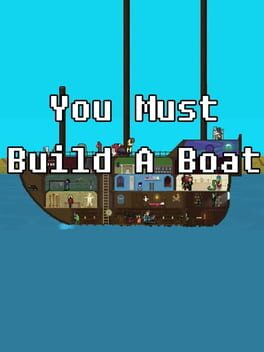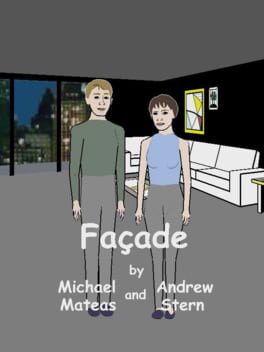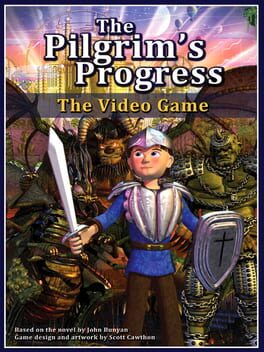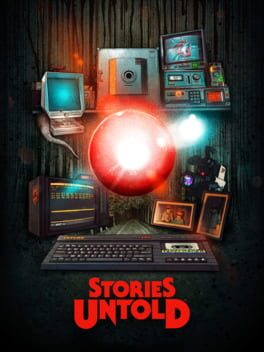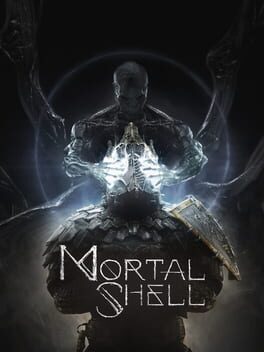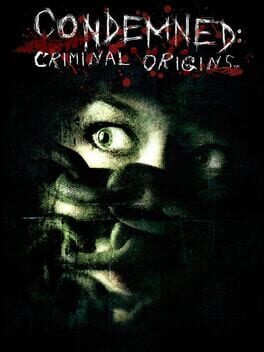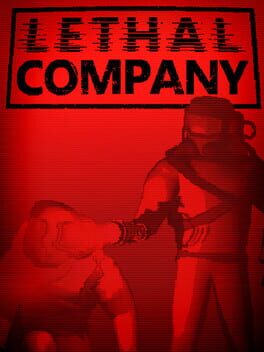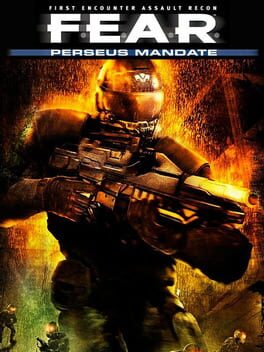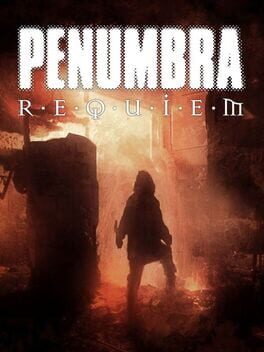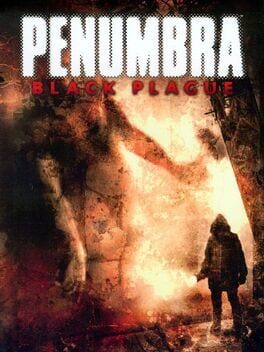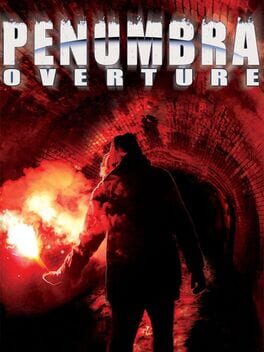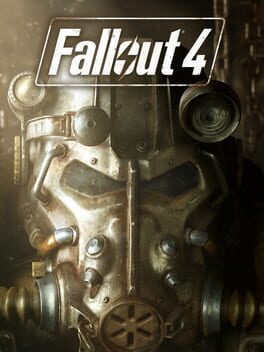There is some weirdo out there who was like
"Yeah! Let's fuse a Candy Crush/Bejeweled tile-matcher mobile game with a roguelite, all with some classic RPG influence! That'll be good!"
And you know what? Props. It still is pretty sick. It is a little bit more linear than I remembered, but it's not often this style of tile-matcher has this much depth and mechanics to it. And with risk-reward systems too? They were cooking.
"Yeah! Let's fuse a Candy Crush/Bejeweled tile-matcher mobile game with a roguelite, all with some classic RPG influence! That'll be good!"
And you know what? Props. It still is pretty sick. It is a little bit more linear than I remembered, but it's not often this style of tile-matcher has this much depth and mechanics to it. And with risk-reward systems too? They were cooking.
2018
The gameplay loop is just sort of all it has to offer, and while I found it pretty average, ymmv. I thought that new mechanics were being introduced at a fine-enough rate to keep things interesting, but this decelerated as the game is like, way too long. The last few missions are also just infuriating, as the first 2/3 of the game at least gives you some freedom in how you approach, but the difficulty in the last third forces you to be extremely cut-and-dry about it, and if you fail (like you likely will on each one), just do it all over again in your bored stupor. Really messes with the pacing, and by the time the story kicks into "endgame", I was completely exhausted and it took me like five months to get back around to finishing it.
There is this sense of freedom that the game dangles over you like a carrot, and there is a much better hypothetical version of this game where there's more freedom and ingenuity that comes with approaching missions. A lot of mechanics that hint at this really upset me, like the waveform bar that shows the noise you're making. Ultimately useless, but in the first couple hours of the game I was waiting to see how the game would use it in a cool way.
Overall it's probably in the better half of quick Unity asset games I've played, but it could've been a lot better if it was half its length.
There is this sense of freedom that the game dangles over you like a carrot, and there is a much better hypothetical version of this game where there's more freedom and ingenuity that comes with approaching missions. A lot of mechanics that hint at this really upset me, like the waveform bar that shows the noise you're making. Ultimately useless, but in the first couple hours of the game I was waiting to see how the game would use it in a cool way.
Overall it's probably in the better half of quick Unity asset games I've played, but it could've been a lot better if it was half its length.
2005
2017
Disappointingly short, but makes excellent use of its 3 hour runtime with an incredible phantasmagoria of 80s technology, unseen terror, and hostile mind games, creating an experience that demands a replay after completion. After previously brushing with a couple games that were essentially trying to be other games before booting this one up, it was wonderfully refreshing to play a game that is very confident in its own unique weirdness. I never found the “puzzles” to be too rousing, but they were unique enough to do much more than just keep me going.
Sporadic performance issues and the lack of a skip button are the only real marks I have against the experience, otherwise an excellently spooky time that I couldn’t recommend enough.
Definitely worth a spoiler-filled review, which I will eventually get around to.
Sporadic performance issues and the lack of a skip button are the only real marks I have against the experience, otherwise an excellently spooky time that I couldn’t recommend enough.
Definitely worth a spoiler-filled review, which I will eventually get around to.
2020
Condemned is a jubilant, evil-grinned celebration of twisted crime thrillers, and even when the story is muddled and the movement can feel sluggish, it still excels with its great combat, astounding sound design/music, and striking visuals, creating an atmosphere and overlying tension that feels absolutely decrepit and putrid, in the best way possible.
Combat is not exactly on Sekiro levels or anything, but those latent senses I formed during my time with that game were coming out with this one. It has some surprising depth to it with blocking and counters, with a very minimal focus on guns considering their scarcity, but when you pick them up, you always have the upper hand. The focus on melee combat with a touch on devastating guns is a great yin to the yang of F.E.A.R. 's focus on gunplay with minimal focus on the hilariously over-the-top melee system. Bouncing off of that, instead of F.E.A.R.’s array of heavy military weapons, the array of weapons in Condemned, if you could even call it that, helps the game imbue its squalid and low-class environment, where everything and anything scattered around seems like a weapon. Some of my favorite examples of this were both detached locker doors and school desk tops in the school level. I will admit that the taser basically works against everything great about the game’s combat, but I had the best experience possible in that I accidentally forgot about the taser and spent the vast majority of the game not using it. However, I still cannot force myself to ignore it and it being one of the worst parts of the game. Enemy AI is just as engaging as the actual combat, where they stalk you and take cover and hide to try and get the jump on you as much as they can. When you get to overall movement though, it sounds good on paper, but in actual practice it’s a total nightmare, and not in a good way. The deliberate slowness could help with pacing if the game was strictly linear with no puzzles, but it is such an insane pain in the ass when you’re backtracking or trying to look around for supplies/weapons, and the sprint button has such a fast disposal and slow recharge, creating this sludgy loop of fast, slooooooow, fast, slooooooooow, fast, slooooow that can make progression just garbage. However, the movement and stamina actually works pretty well for combat, adding a lot of weight and strategy into the process. I understand that having faster movement would make this game even shorter than it already is (the game’s length is not a problem, trust me, I’ll get to that shortly), and there’s okay ideas in its implementation, but it seriously needed some reevaluation in its final form.
The story is not really a huge part of why this game excels, because at its core, it’s pretty vague, nonsensical, and seems like a mishmash of several murder mystery movies, most notably Se7en but also Minority Report and Oldboy to a lesser extent. However, it serves as a good catalyst for its levels, and does a lot to create this coherent carnival of amazingly creepy and offputting locations. I think all the people saying the game quickly loses its footing are smoking loud (or just referring to the story, most likely), because in my opinion the game starts good and keeps getting better and better, with the last few levels all feeling standout. The game is impressively short, beaten in only 6-7 hours, but not one level feels like it takes away from the upwards-accelerating haunted phantasmagoria it feels like. I’m a big fan of when games just have a seeming apocalypse going on in the background of the story that is mostly irrelevant to the central plot/conflict (we learn this is sadly not the case in the sequel). In terms of atmosphere, progression, and setpieces, the department store level is an absolute masterpiece and sets an insurmountable standard for the rest of the game (as great as what’s left is).
Sound is such a huge part of why this game excels, and even when this is mainly in reference to the game’s incredible sound design, it’s also like jazz, in how it can be about the sounds that don’t get played. There are so many subdued and drawn-back moments of terror when music is not there to make it more tense. All you’ll hear are footsteps, breaths or rattling chains nearing you, and that is so much scarier than hearing le scary music or le shock sound effect, just you, silence, distant noise, and your brain to make of that what you will. This unseen terror is very deliberate in tying into the game’s “background horror” where the world seems to be ending around the protagonist while he’s preoccupied with other things. Especially great is the game’s forgoing of an in-engine reverb system and uses what I could call “pre-rendered reverb” to get the echoing of people’s voices and noises in a much more realistic manner. Voices in another room absolutely sound like voices in another room, and it really puts you off-guard the first few times you hear it, adding to the overall immersion in a fantastic way. In continued regards to sound, the score is great at its shining moments, but as explained earlier, is used sparsely in order to let the sound design shine.
To me, Condemned feels like a combination of two games among my all-time favorites: Cry of Fear and BioShock 1, which both happened to release after Condemned, and while it shares similar flaws to both of those, the terror and atmosphere is still clamoring at me weeks after I beaten it. It is simply psychotic to me that Monolith managed to release both F.E.A.R. and this game in the exact same year. Thoroughly unbelievable; The absolute cooking that was going on in that studio between 2004 and 2005.
Combat is not exactly on Sekiro levels or anything, but those latent senses I formed during my time with that game were coming out with this one. It has some surprising depth to it with blocking and counters, with a very minimal focus on guns considering their scarcity, but when you pick them up, you always have the upper hand. The focus on melee combat with a touch on devastating guns is a great yin to the yang of F.E.A.R. 's focus on gunplay with minimal focus on the hilariously over-the-top melee system. Bouncing off of that, instead of F.E.A.R.’s array of heavy military weapons, the array of weapons in Condemned, if you could even call it that, helps the game imbue its squalid and low-class environment, where everything and anything scattered around seems like a weapon. Some of my favorite examples of this were both detached locker doors and school desk tops in the school level. I will admit that the taser basically works against everything great about the game’s combat, but I had the best experience possible in that I accidentally forgot about the taser and spent the vast majority of the game not using it. However, I still cannot force myself to ignore it and it being one of the worst parts of the game. Enemy AI is just as engaging as the actual combat, where they stalk you and take cover and hide to try and get the jump on you as much as they can. When you get to overall movement though, it sounds good on paper, but in actual practice it’s a total nightmare, and not in a good way. The deliberate slowness could help with pacing if the game was strictly linear with no puzzles, but it is such an insane pain in the ass when you’re backtracking or trying to look around for supplies/weapons, and the sprint button has such a fast disposal and slow recharge, creating this sludgy loop of fast, slooooooow, fast, slooooooooow, fast, slooooow that can make progression just garbage. However, the movement and stamina actually works pretty well for combat, adding a lot of weight and strategy into the process. I understand that having faster movement would make this game even shorter than it already is (the game’s length is not a problem, trust me, I’ll get to that shortly), and there’s okay ideas in its implementation, but it seriously needed some reevaluation in its final form.
The story is not really a huge part of why this game excels, because at its core, it’s pretty vague, nonsensical, and seems like a mishmash of several murder mystery movies, most notably Se7en but also Minority Report and Oldboy to a lesser extent. However, it serves as a good catalyst for its levels, and does a lot to create this coherent carnival of amazingly creepy and offputting locations. I think all the people saying the game quickly loses its footing are smoking loud (or just referring to the story, most likely), because in my opinion the game starts good and keeps getting better and better, with the last few levels all feeling standout. The game is impressively short, beaten in only 6-7 hours, but not one level feels like it takes away from the upwards-accelerating haunted phantasmagoria it feels like. I’m a big fan of when games just have a seeming apocalypse going on in the background of the story that is mostly irrelevant to the central plot/conflict (we learn this is sadly not the case in the sequel). In terms of atmosphere, progression, and setpieces, the department store level is an absolute masterpiece and sets an insurmountable standard for the rest of the game (as great as what’s left is).
Sound is such a huge part of why this game excels, and even when this is mainly in reference to the game’s incredible sound design, it’s also like jazz, in how it can be about the sounds that don’t get played. There are so many subdued and drawn-back moments of terror when music is not there to make it more tense. All you’ll hear are footsteps, breaths or rattling chains nearing you, and that is so much scarier than hearing le scary music or le shock sound effect, just you, silence, distant noise, and your brain to make of that what you will. This unseen terror is very deliberate in tying into the game’s “background horror” where the world seems to be ending around the protagonist while he’s preoccupied with other things. Especially great is the game’s forgoing of an in-engine reverb system and uses what I could call “pre-rendered reverb” to get the echoing of people’s voices and noises in a much more realistic manner. Voices in another room absolutely sound like voices in another room, and it really puts you off-guard the first few times you hear it, adding to the overall immersion in a fantastic way. In continued regards to sound, the score is great at its shining moments, but as explained earlier, is used sparsely in order to let the sound design shine.
To me, Condemned feels like a combination of two games among my all-time favorites: Cry of Fear and BioShock 1, which both happened to release after Condemned, and while it shares similar flaws to both of those, the terror and atmosphere is still clamoring at me weeks after I beaten it. It is simply psychotic to me that Monolith managed to release both F.E.A.R. and this game in the exact same year. Thoroughly unbelievable; The absolute cooking that was going on in that studio between 2004 and 2005.
2023
It certainly wears its influences on its sleeve, feeling like a sometimes crude cross between the best parts of Deep Rock Galactic and Phasmophobia, with lore and settings inspired by Iron Lung and Astroneer. But the core roguelike gameplay makes it, while pretty repetitive, a lot of tense fun, especially with friends.
While much shorter than most, A Story About My Uncle spends every moment building itself up as an endlessly fun and sometimes challenging adventure filled with childlike wonder and dreamlike beauty.
I originally got this game in 2015 on sale due to the “parkour” tag and have had it sitting in the backlog ever since, and finally spent a weekend I forced myself not to care about school to play through it in one sitting. As I’m a teacher, I’ve been thinking a lot about how to instill wonder in students, and in tandem I’ve been thinking about wonder itself, and what used to give me that sense of “wonder” that certain of my favorite childhood media gave me. I really think the visuals, in the art style and locations, really sell the almost otherworldly invitation that had been coming back to me.
The parkour in the game is much less Mirror’s Edge and more like Uncharted, being able to grapple hook across these humongous levels that is super satisfying and sometimes provides a pretty good challenge when you’re on a timer. There are many instances of the fact “THIS IS A STUDENT GAME” being very clear and loud, but there’s enough passion and wonder to move past them.
I originally got this game in 2015 on sale due to the “parkour” tag and have had it sitting in the backlog ever since, and finally spent a weekend I forced myself not to care about school to play through it in one sitting. As I’m a teacher, I’ve been thinking a lot about how to instill wonder in students, and in tandem I’ve been thinking about wonder itself, and what used to give me that sense of “wonder” that certain of my favorite childhood media gave me. I really think the visuals, in the art style and locations, really sell the almost otherworldly invitation that had been coming back to me.
The parkour in the game is much less Mirror’s Edge and more like Uncharted, being able to grapple hook across these humongous levels that is super satisfying and sometimes provides a pretty good challenge when you’re on a timer. There are many instances of the fact “THIS IS A STUDENT GAME” being very clear and loud, but there’s enough passion and wonder to move past them.
Significantly better than the more middling expansion that preceded it. Although the story isn’t that engaging or interesting, it puts new gameplay, enemies, weapons, and locales first. The collection of new weapons are all pretty awesome even though the balancing on a couple of them is exceedingly nuts. Even though it does drag here and there, every single gunfight is a delight, in classic F.E.A.R. fashion.
2008
Requiem, for reasons that are mostly unfortunate, takes the place of being the worst entry in the Penumbra series with its surprising distancing from its survival horror format and, for whatever reason, turning into a mediocre puzzle-platformer with controls that were certainly not meant for the genre.
As many people familiar with the series know, it was planned to be an entire trilogy, where Overture and Black Plague would serve as the first and second entries. However, dissonance with the publisher stopped that from happening and urged Frictional to tie up loose ends on the story with this pretty weak-willed expansion for BP.
For some reason, they decided to drop the really solid survival horror that made Black Plague a really fun time and just completely shifted to puzzles for the whole time, and not just the “where’s the key hidden” fare that the game usually hangs with. The game sometimes plays like a really shoddy attempt at capturing the cold and hostile serenity underlined with logic puzzles that made the first Portal game so great. There’s a lot of platforming in some of these puzzles, and trust me, the game was DEFINITELY not meant for platforming, as jumping from lift to lift sometimes feels like a diceroll’s chance rather than determined by your own skill. It really sucks when some of the puzzles are halfway decent, because next thing they’re hitting you with the most random reference to the Donkey Kong arcade game in the form of a platforming challenge, and dear god it does not work in the slightest, with not only the puzzle itself sucking but the music randomly taking a chiptune feel, which was so random and offputting.
Even though the ending was pretty bad, I didn't mind the "story" that was at hand, and the couple times they do comic relief with the centre announcer saying out-of-character things really worked for me.
On the bright side, I’m glad that Frictional got to kick off the Amnesia series after this (and to great success/popularity), because in many ways, the first game is essentially the Penumbra 3 that never happened; There’s a big overlap in tone, mechanics, and level design, and even when I don’t completely buy the hype and praise for TDD, I’m glad it really kickstarted Frictional’s popularity.
Hopefully I’ll look into Penumbra: Necrologue soon, which is a total conversion mod for Amnesia that basically turns it back into Penumbra with all the same mechanics, in the form of a continuation of the story.
As many people familiar with the series know, it was planned to be an entire trilogy, where Overture and Black Plague would serve as the first and second entries. However, dissonance with the publisher stopped that from happening and urged Frictional to tie up loose ends on the story with this pretty weak-willed expansion for BP.
For some reason, they decided to drop the really solid survival horror that made Black Plague a really fun time and just completely shifted to puzzles for the whole time, and not just the “where’s the key hidden” fare that the game usually hangs with. The game sometimes plays like a really shoddy attempt at capturing the cold and hostile serenity underlined with logic puzzles that made the first Portal game so great. There’s a lot of platforming in some of these puzzles, and trust me, the game was DEFINITELY not meant for platforming, as jumping from lift to lift sometimes feels like a diceroll’s chance rather than determined by your own skill. It really sucks when some of the puzzles are halfway decent, because next thing they’re hitting you with the most random reference to the Donkey Kong arcade game in the form of a platforming challenge, and dear god it does not work in the slightest, with not only the puzzle itself sucking but the music randomly taking a chiptune feel, which was so random and offputting.
Even though the ending was pretty bad, I didn't mind the "story" that was at hand, and the couple times they do comic relief with the centre announcer saying out-of-character things really worked for me.
On the bright side, I’m glad that Frictional got to kick off the Amnesia series after this (and to great success/popularity), because in many ways, the first game is essentially the Penumbra 3 that never happened; There’s a big overlap in tone, mechanics, and level design, and even when I don’t completely buy the hype and praise for TDD, I’m glad it really kickstarted Frictional’s popularity.
Hopefully I’ll look into Penumbra: Necrologue soon, which is a total conversion mod for Amnesia that basically turns it back into Penumbra with all the same mechanics, in the form of a continuation of the story.
A huge improvement over Overture, Black Plague provides a lot of answers to the open-ended nonsense Overture called its story. It somehow learns to take itself a bit less seriously while also being definitely scarier, with Clarence serving as some expert comic relief who still manages to pull the horror reins fantastically here and there. Also a significant improvement in puzzles, even there still were a few that made no sense and sucked. They understood how garbage the combat was in the first game, and their response to that was to remove it altogether, which came together to great success, with the Tuurngait Infected feeling absolutely horrifying to get chased down by, and from that making the couple actual “combat” sections feel pretty fantastic to engage with.
The whole old lost mine aesthetic unfortunately gets traded out for more run-of-the-mill abandoned laboratories, but it still works great in my opinion. Black Plague definitely feels like a true predecessor of what was to come in a couple years with the first Amnesia, with the focus on hiding from your enemies instead of engaging them in combat.
The story still poses some huge open-ended insinuations that feel way too huge to wrap your head around, but at least it was way less lackadaisical than Overture’s story progression.
The whole old lost mine aesthetic unfortunately gets traded out for more run-of-the-mill abandoned laboratories, but it still works great in my opinion. Black Plague definitely feels like a true predecessor of what was to come in a couple years with the first Amnesia, with the focus on hiding from your enemies instead of engaging them in combat.
The story still poses some huge open-ended insinuations that feel way too huge to wrap your head around, but at least it was way less lackadaisical than Overture’s story progression.
A great bite-sized helping of Nazi-killing gratification that both serves as a homage to the original Wolfenstein trilogy as well as cutting some of the fat off of The New Order to create a consistently great 6 hour romp.
MachineGames just understands good gunplay. The arsenal that this game presents, both stuff taken from TNO and new stuff invented for the expansion, is so much fun and every piece falls into the puzzle. The Bombenschuss, while I would’ve liked the scope to be a bit more magnifying, is an incredibly satisfying sniper rifle and totally took me back to my days of sniping with the Kar98k in COD WaW. The shotgun doesn’t provide a gigantic new perspective to the one in TNO, but…it’s still very satisfying. The grenade launcher is sort of a one inch punch hard ping/weapon and I love it.
The balancing on higher difficulties (I beat the game on Uber) can sometimes be a mixed bag but it’s honestly really nice when you’re not constantly coming up against bullet sponge enemies, especially after finishing Fallout 4 on Hard. Enemy armor actually feels very practical and something that can be both destroyed and that has deliberate entry points that house a very reasonably health-having enemy.
The characters, why you don’t spend a lot of time with them, are still really impactful. I still can’t believe that the game got me extremely upset about the death of a character you only really spend about a minute or two with.
It made me so happy to see people doing Nazi zombies again, even though the OG Wolfenstein 3D sort of already did it with the mutant enemies. Their attack patterns as well as speed feels really erratic and unpredictable, which makes the last couple chapters where you deal with them work so much more, where you’re essentially retreading over the same level from before but in a much different context.
This is less a praise of TOB and more one of TNO, but I love how the enemies look less like Nazi soldiers and more like these horrifying steampunk mutants. Gives them kind of this Half Life 2 Civil Protection vibe where they had to be altered forever just for a chance of surviving.
MachineGames just understands good gunplay. The arsenal that this game presents, both stuff taken from TNO and new stuff invented for the expansion, is so much fun and every piece falls into the puzzle. The Bombenschuss, while I would’ve liked the scope to be a bit more magnifying, is an incredibly satisfying sniper rifle and totally took me back to my days of sniping with the Kar98k in COD WaW. The shotgun doesn’t provide a gigantic new perspective to the one in TNO, but…it’s still very satisfying. The grenade launcher is sort of a one inch punch hard ping/weapon and I love it.
The balancing on higher difficulties (I beat the game on Uber) can sometimes be a mixed bag but it’s honestly really nice when you’re not constantly coming up against bullet sponge enemies, especially after finishing Fallout 4 on Hard. Enemy armor actually feels very practical and something that can be both destroyed and that has deliberate entry points that house a very reasonably health-having enemy.
The characters, why you don’t spend a lot of time with them, are still really impactful. I still can’t believe that the game got me extremely upset about the death of a character you only really spend about a minute or two with.
It made me so happy to see people doing Nazi zombies again, even though the OG Wolfenstein 3D sort of already did it with the mutant enemies. Their attack patterns as well as speed feels really erratic and unpredictable, which makes the last couple chapters where you deal with them work so much more, where you’re essentially retreading over the same level from before but in a much different context.
This is less a praise of TOB and more one of TNO, but I love how the enemies look less like Nazi soldiers and more like these horrifying steampunk mutants. Gives them kind of this Half Life 2 Civil Protection vibe where they had to be altered forever just for a chance of surviving.
2007
With Penumbra serving as kind of a blueprint of the early 2010s horror smash hit Amnesia (which I personally have mixed but overall positive feelings on), there are things I like more about Penumbra and there’s things I’m glad were left in the wastebasket. But it still comes together to make a pretty passable horror ride.
The storytelling in both of these games is nothing incredible but I much prefer how everything builds up here, reading through notes and journals that give context to the events that led to the mines’ derelict state. Although I do think the protagonist’s journey does get kind of muddy and lost as you progress, even though Red, whose peril derails your main objective, is a pretty memorable character. Also, I think that hiding vital notes that are important to progression within notes that are completely lore related and supplementary, is kind of stupid. Also in atmosphere I think that P:O just barely feels better, even when The Dark Descent’s Victorian occult alt-history oozes so much for me to chew on, the location of Penumbra feels so much more unique, and unmistakably, immutably cold.
The game also has some real issues with balancing items. The glowstick is completely overpowered, the description labels it a “ghoulish” last substitute that’s essentially better than nothing if you run out of flashlight battery, but the truth is that it’s completely superior since it never runs out of charge and it lights up your entire surroundings in about a couple meters’ radius, albeit in a sickly teal, but it’s still far outweighs anything depletable.
In concept, combat has some cool ideas, where you manually have to wind up an attack on an enemy in the classic Frictional fashion of their games feeling to that level of “manual”, but in practice it can get really, really bad. Specifically on the spider enemies, whose hitboxes feel only measurable by nanometers, trying to properly wind up attacks against them while they chip away at your health bouncing around the place is an incredible pain in the ass. Combat can also be super exploitable, “stealth” sections with the undead dogs are completely trivialized by positioning yourself out of their reach and battering them.
The puzzles in the game are anywhere from fine and inoffensive to pretty stupid and unintuitive. The worst I can think of is when you come to a part where the code to unlock a door is apparently hidden among mad scribings across a wall. Can you, the player, see this code? No. I stared at the wall for what I knew was way too long, when the answer was that you had to find a hidden blank piece of paper, which was 2 load zones away, and then come back and use it on the wall to get the code, which you, the player, still cannot see on the wall. Unbelievably stupid, and to think I saw people praising these puzzles as if this is some “thinking man’s game”.
It’s weird for me to say that I prefer Amnesia to this game when I still don’t find TDD anything to write home about, but this was a necessary stepping stone for them to understand how to proceed with their horror output.
The storytelling in both of these games is nothing incredible but I much prefer how everything builds up here, reading through notes and journals that give context to the events that led to the mines’ derelict state. Although I do think the protagonist’s journey does get kind of muddy and lost as you progress, even though Red, whose peril derails your main objective, is a pretty memorable character. Also, I think that hiding vital notes that are important to progression within notes that are completely lore related and supplementary, is kind of stupid. Also in atmosphere I think that P:O just barely feels better, even when The Dark Descent’s Victorian occult alt-history oozes so much for me to chew on, the location of Penumbra feels so much more unique, and unmistakably, immutably cold.
The game also has some real issues with balancing items. The glowstick is completely overpowered, the description labels it a “ghoulish” last substitute that’s essentially better than nothing if you run out of flashlight battery, but the truth is that it’s completely superior since it never runs out of charge and it lights up your entire surroundings in about a couple meters’ radius, albeit in a sickly teal, but it’s still far outweighs anything depletable.
In concept, combat has some cool ideas, where you manually have to wind up an attack on an enemy in the classic Frictional fashion of their games feeling to that level of “manual”, but in practice it can get really, really bad. Specifically on the spider enemies, whose hitboxes feel only measurable by nanometers, trying to properly wind up attacks against them while they chip away at your health bouncing around the place is an incredible pain in the ass. Combat can also be super exploitable, “stealth” sections with the undead dogs are completely trivialized by positioning yourself out of their reach and battering them.
The puzzles in the game are anywhere from fine and inoffensive to pretty stupid and unintuitive. The worst I can think of is when you come to a part where the code to unlock a door is apparently hidden among mad scribings across a wall. Can you, the player, see this code? No. I stared at the wall for what I knew was way too long, when the answer was that you had to find a hidden blank piece of paper, which was 2 load zones away, and then come back and use it on the wall to get the code, which you, the player, still cannot see on the wall. Unbelievably stupid, and to think I saw people praising these puzzles as if this is some “thinking man’s game”.
It’s weird for me to say that I prefer Amnesia to this game when I still don’t find TDD anything to write home about, but this was a necessary stepping stone for them to understand how to proceed with their horror output.
2015
I think more people need to come around to considering that this game may be superior to Fallout 3, which I believe to be the fact. It’s not great, obviously, but the hold that NV had over 3 kind of forced Bethesda to emerge from their laurel-resting and try to be more confident about what worked the best with 3, namely being a fun exploration-based open world FPS.
It’s a little known fact that Fallout 3 is actually kind of bad. The story and characters suck, the quests are boring, the world is unengaging, and it doesn’t feel true to the world that the preceding two games set up. There’s still a lot of reasons to play the game though; It does establish its own unique grim atmosphere through its striking visuals and music, there’s some cool quests here and there, and the gunplay can be pretty fun. I know that that game’s atmosphere is a non-negotiable for many fans and style it as a reason for why they love the game, but personally it doesn’t do THAT much for me, even though I like it. The insistence on making the game look like shit because of the atmosphere, I’m not all there for. Fallout 4, in many ways, tries to take what works about that game and brings it up to bat where it claims its own style and gameplay a lot more than 3, which was stuck between being an accessible action-RPG/FPS hybrid as well as a sequel to old but celebrated isometric RPGs from the 90s. It’s much more committed to being an open-world looter shooter à la Borderlands, and I think it works for the most part.
Bethesda will never be able to be as creative and engaging with their writing as Obsidian are. There are small towns in New Vegas that alone are more creative than the entirety of 3. But with Fallout 4, they…tried. And it works, sometimes. Their response to the depth NV brought to its world with its series of deeply imperfect but understandable factions is to just…make the Brotherhood of Steel racists and also kind of fascists. The Institute are working day and night to bring a brighter future to the Wasteland but they can’t stop kidnapping people and they’re also fascists. They obviously tried a bit more nuance here whereas there was much more clear-cut good and evil in 3, and I can appreciate that. The other two main factions, the Minutemen and the Railroad (naming of the latter feeling kind of inappropriate and diminishing, trying to equate a video game faction saving video game characters to the real life Underground Railroad) feels way less shaded in when there was obvious room to try it.
Where Fallout 4 excels is putting the gameplay and exploration first. Even though parts of the world feel worse than others, FO4 really is the Skyrim to New Vegas’s Oblivion. It strips away a lot of the faux “RPG” elements and feels much more confident in itself as an action-exploration game. The gunplay and weapon customization is MUCH better here, and it really lends itself for the gameplay loop being as engaging as I found it to be. Some enemies feel poorly balanced, fighting feral ghouls is just straight up a nightmare because of their erratic movement, sentry bots and assaultrons are absolute tanks, and raiders just throw way too many molotovs, but VATS is a continuing nice middle ground for Bethesda’s still-in-progress mastering of making great gunplay, which was much lower in FO3 and basically required me to always be using it. Some of the insistence on making it fit in with its contemporary survival peers like Minecraft, Rust, The Forest, etc. is a little hamfisted at times, but I can roll with it, since this setting and story works so well for it, even though it’s obviously more focused on “managing a settlement” more than “surviving”. Personalizing my HQ at Sanctuary and creating a functioning settlement, as well as gathering supplies and creating supply lines, took up a lot more of my time than I had expected, which is cool. Just forget about survival mode though, which takes New Vegas’s “hardcore” mode as simply a mode to switch on and off in coexistence with any difficulty, and makes it a difficulty in itself, forcing you to experience the game’s barely fair Very Hard difficulty.
My original review mentioned that there wasn’t a lot to do outside of “the main quest” which is a complete fabrication. There may not be tons of winding questlines similar to Fallout’s sister series in The Elder Scrolls but there’s still lots of go do and see, and stories to experience. Also, in the last playthrough I remember commenting on the fact that the art style was really ugly, but I was a dumb fool idiot because the art style is actually great. It really starts to dip when you get into higher places (ie, Vertibird cruising, aboard the Prydwen, high exits for buildings, etc.), but I was pretty amazed seeing the tart glowing sunset that is painted behind the Boston skyline. Even when night still feels a bit too bright for my liking, it was nice. There’s not a lot of games that have done blue hour this good.
It’s a little known fact that Fallout 3 is actually kind of bad. The story and characters suck, the quests are boring, the world is unengaging, and it doesn’t feel true to the world that the preceding two games set up. There’s still a lot of reasons to play the game though; It does establish its own unique grim atmosphere through its striking visuals and music, there’s some cool quests here and there, and the gunplay can be pretty fun. I know that that game’s atmosphere is a non-negotiable for many fans and style it as a reason for why they love the game, but personally it doesn’t do THAT much for me, even though I like it. The insistence on making the game look like shit because of the atmosphere, I’m not all there for. Fallout 4, in many ways, tries to take what works about that game and brings it up to bat where it claims its own style and gameplay a lot more than 3, which was stuck between being an accessible action-RPG/FPS hybrid as well as a sequel to old but celebrated isometric RPGs from the 90s. It’s much more committed to being an open-world looter shooter à la Borderlands, and I think it works for the most part.
Bethesda will never be able to be as creative and engaging with their writing as Obsidian are. There are small towns in New Vegas that alone are more creative than the entirety of 3. But with Fallout 4, they…tried. And it works, sometimes. Their response to the depth NV brought to its world with its series of deeply imperfect but understandable factions is to just…make the Brotherhood of Steel racists and also kind of fascists. The Institute are working day and night to bring a brighter future to the Wasteland but they can’t stop kidnapping people and they’re also fascists. They obviously tried a bit more nuance here whereas there was much more clear-cut good and evil in 3, and I can appreciate that. The other two main factions, the Minutemen and the Railroad (naming of the latter feeling kind of inappropriate and diminishing, trying to equate a video game faction saving video game characters to the real life Underground Railroad) feels way less shaded in when there was obvious room to try it.
Where Fallout 4 excels is putting the gameplay and exploration first. Even though parts of the world feel worse than others, FO4 really is the Skyrim to New Vegas’s Oblivion. It strips away a lot of the faux “RPG” elements and feels much more confident in itself as an action-exploration game. The gunplay and weapon customization is MUCH better here, and it really lends itself for the gameplay loop being as engaging as I found it to be. Some enemies feel poorly balanced, fighting feral ghouls is just straight up a nightmare because of their erratic movement, sentry bots and assaultrons are absolute tanks, and raiders just throw way too many molotovs, but VATS is a continuing nice middle ground for Bethesda’s still-in-progress mastering of making great gunplay, which was much lower in FO3 and basically required me to always be using it. Some of the insistence on making it fit in with its contemporary survival peers like Minecraft, Rust, The Forest, etc. is a little hamfisted at times, but I can roll with it, since this setting and story works so well for it, even though it’s obviously more focused on “managing a settlement” more than “surviving”. Personalizing my HQ at Sanctuary and creating a functioning settlement, as well as gathering supplies and creating supply lines, took up a lot more of my time than I had expected, which is cool. Just forget about survival mode though, which takes New Vegas’s “hardcore” mode as simply a mode to switch on and off in coexistence with any difficulty, and makes it a difficulty in itself, forcing you to experience the game’s barely fair Very Hard difficulty.
My original review mentioned that there wasn’t a lot to do outside of “the main quest” which is a complete fabrication. There may not be tons of winding questlines similar to Fallout’s sister series in The Elder Scrolls but there’s still lots of go do and see, and stories to experience. Also, in the last playthrough I remember commenting on the fact that the art style was really ugly, but I was a dumb fool idiot because the art style is actually great. It really starts to dip when you get into higher places (ie, Vertibird cruising, aboard the Prydwen, high exits for buildings, etc.), but I was pretty amazed seeing the tart glowing sunset that is painted behind the Boston skyline. Even when night still feels a bit too bright for my liking, it was nice. There’s not a lot of games that have done blue hour this good.
